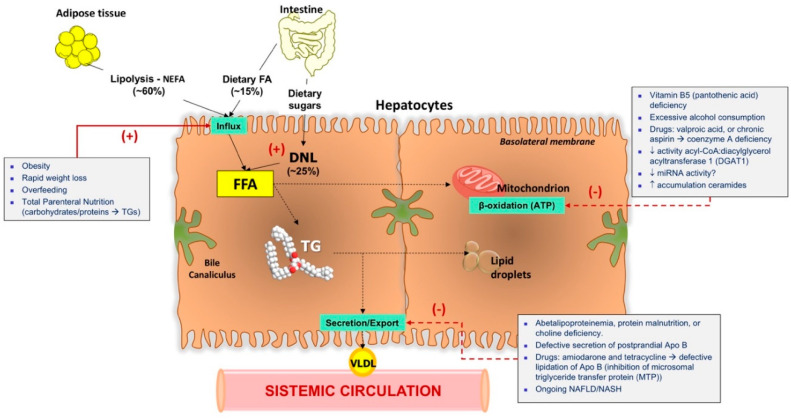Figure 2.
Mechanisms of lipid accumulation in the liver. In health, free fatty acids (FFA) originate from lipolysis of triglycerides (TG) in adipose tissue leading to circulating non-esterified fatty acids, (NEFA, ~60%), from dietary fatty acids (~15%), and from dietary sugars undergoing de novo lipogenesis (DNL, ~25%) mediated by several proteins (sterol regulatory element-binding protein 1, stearoyl CoA-desaturase, and fatty acid synthase). FA in hepatocytes undergo mitochondrial β-oxidation or re-esterification with glycerol to form TG. TG can be stored in lipid droplets or exported to blood as very-low density lipoproteins (VLDL). NAFLD is the consequence of excess flow of FFA and accumulation of intrahepatic TG due to several abnormalities depicted in the boxes, and associated with increased influx of FFA, increased DNL, decreased β-oxidation, and decreased secretion/export of TG as very-low density lipoproteins (VLDL). Abbreviations: DNL, de novo lipogenesis; FFA, free fatty acids; NEFA, non-esterified fatty acids; TG, triglycerides; VLDL, very-low density lipoproteins. (+), increased; (−), decreased.

